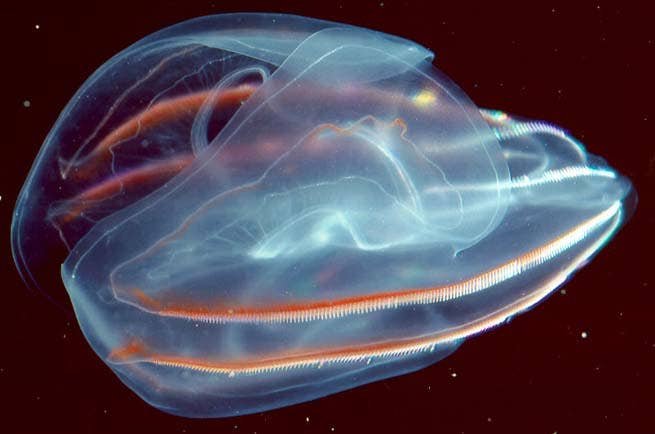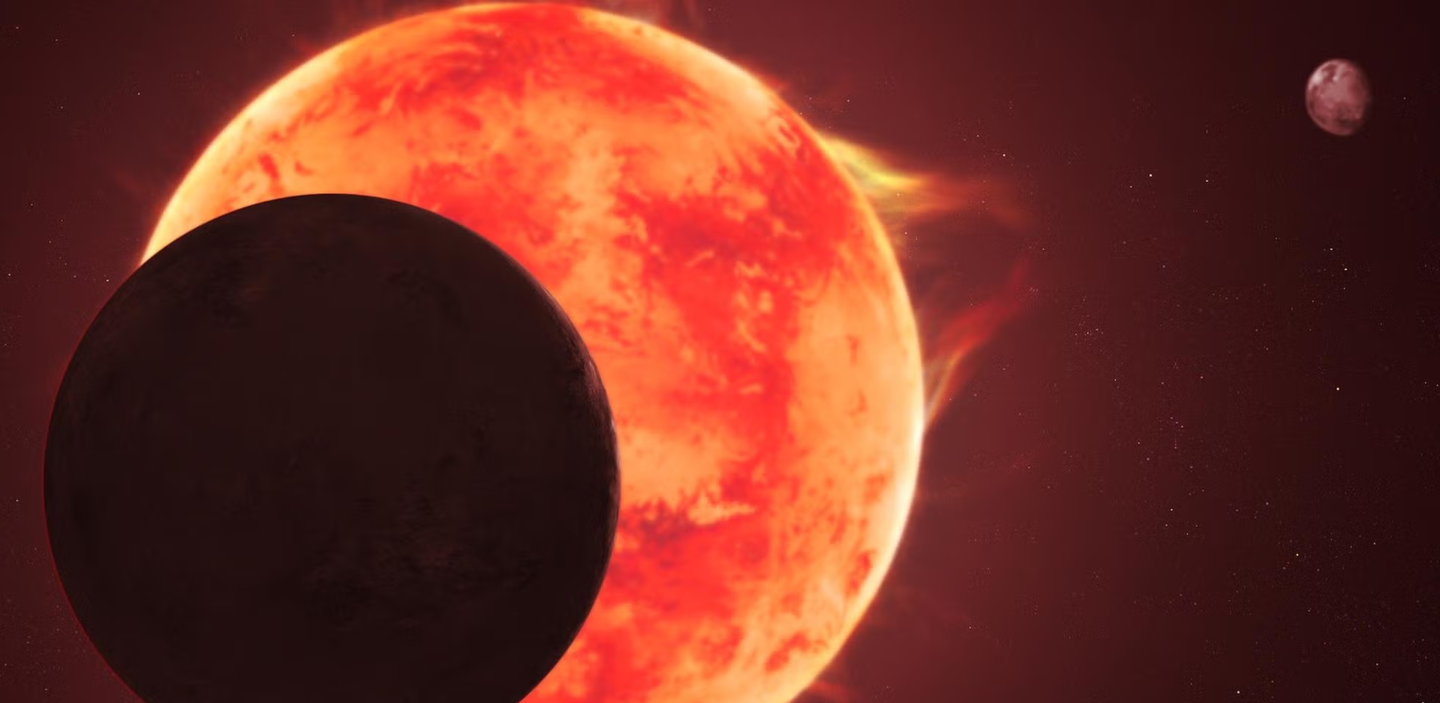Earth’s oldest living creature unearthed—dating back 700 million years
For over a century, scientists have wrestled with one of biology’s most fundamental mysteries: how the first animals evolved.

UC Berkeley scientists have identified comb jellies—also known as ctenophores—as likely the first animals to evolve, suggesting that these ocean-dwelling predators may sit at the base of the animal kingdom. (CREDIT: CC BY-SA 4.0)
For over a century, scientists have wrestled with one of biology’s most fundamental mysteries: how the first animals evolved. These earliest creatures emerged more than 600 million years ago in Earth's ancient seas, leaving behind few clues. At the heart of the debate lies a simple but profound question—what came first: sponges or comb jellies?
Sponges, the humble filter-feeders, lack nerves and muscles but have long been considered primitive. Comb jellies, or ctenophores, are far more complex. They use rows of tiny beating cilia to swim and boast a nervous system that lets them hunt. Their surprising features have kept researchers guessing about where they fit on the animal family tree.
A groundbreaking study published in Nature has now settled the debate. The research shows that ctenophores—not sponges—were the first to branch off from the ancestral animal lineage. This upends long-held assumptions and reshapes the origin story of animal life.
The study’s implications reach far beyond taxonomy. Since ctenophores came first, scientists now believe complex traits like nervous systems may have evolved more than once. It also means multicellularity—the ability to form complex bodies from many cells—could have deeper and more varied roots than once thought.
Decoding the Past with Modern Genomics
Finding answers wasn’t easy. These early animals left no bones, shells, or fossils to examine. They were soft-bodied and vanished without a trace. To get around this, researchers turned to the genes of modern species. By comparing living animals and their single-celled relatives, scientists hoped to peer back in time.
Led by Daniel Rokhsar at UC Berkeley and Darrin Schultz and Oleg Simakov at the University of Vienna, the team used comparative genomics. They studied chromosomal structures, looking for clues locked in DNA. These patterns offered a kind of molecular fossil record, showing how genes have shifted and split over time.
“The most recent common ancestor of all animals probably lived 600 or 700 million years ago,” said Rokhsar. “It’s hard to know what they were like because they didn’t leave a direct fossil record. But we can use comparisons across living animals to learn about our common ancestors.”
Related Stories
By comparing the arrangement of genes across chromosomes, the team discovered that ctenophores share ancestral chromosomal patterns with unicellular relatives, while sponges and other animals show distinct chromosomal rearrangements. These rearrangements serve as genetic "fingerprints," revealing the evolutionary branching order.
Central to the study was the concept of synteny—the preservation of gene order along chromosomes across species. Researchers reconstructed chromosome structures from modern genomes to infer the arrangement in ancient ancestors.
Schultz, a postdoctoral researcher at the University of Vienna, highlighted the importance of this approach, stating, “The fingerprints of this ancient evolutionary event are still present in the genomes of animals hundreds of millions of years later.”
The team’s pivotal breakthrough came with the sequencing of the ctenophore Hormiphora californensis genome. This enabled comparisons between ctenophores, sponges, and other animals.
Their analysis showed that ctenophores branched off before the chromosomal rearrangements that unite sponges with bilaterians, cnidarians, and other animals. Rokhsar called this finding the “smoking gun” that solidifies ctenophores’ place as the sister group to all other animals.
Implications for Understanding Animal Evolution
This discovery challenges traditional views of animal evolution, which often placed sponges at the base of the tree due to their simplicity. Unlike sponges, ctenophores possess nerve cells, muscle-like structures, and a unique mode of locomotion driven by rows of cilia. Despite these features, their genomic evidence points to a deeper divergence.
Schultz emphasized the broader significance of these findings: “This research gives us context for understanding what makes animals animals. This work will help us understand the basic functions we all share, like how they sense their surroundings, how they eat, and how they move.”
Previous studies relying on gene sequence comparisons yielded conflicting results. Some concluded that sponges diverged first, while others supported ctenophores. Rokhsar explained the difficulty: “The results of sophisticated sequence-based studies were split. There hasn’t really been any convergence to a definitive answer.”
The use of chromosomal synteny provided clarity where earlier methods failed. The conserved gene patterns revealed by this study suggest that sponges, rather than representing a primitive stage of animal life, are more closely related to other animals like jellyfish and humans than to ctenophores.
A Fresh Perspective on Early Animals
Understanding which animals diverged first helps illuminate the evolution of traits like nervous systems, muscles, and multicellularity. Ctenophores’ unique features, including their distinct nerve and muscle systems, suggest these traits may have evolved independently in early animal lineages. This challenges assumptions about the linear progression of complexity in animal evolution.
Bilaterians, the group that includes humans and most other animals with centralized nervous systems and digestive tracts, represent a later evolutionary stage. In contrast, ctenophores and sponges lack many of these features, but they still exhibit the core characteristics of animals, such as multicellular development from a fertilized egg.
The study underscores the power of genomics to solve ancient mysteries. By analyzing the genetic signatures left behind in modern organisms, researchers have taken a profound step toward understanding the origins of animal life.
Schultz noted, “We developed a new way to take one of the deepest glimpses possible into the origins of animal life. This finding will lay the foundation for the scientific community to begin to develop a better understanding of how animals have evolved.”
While the direct ancestors of early animals remain unknown, the insights gained from this research provide a new framework for exploring evolution. As scientists continue to decipher the genetic clues preserved in living species, they inch closer to unraveling the secrets of life’s early history.
Note: Materials provided above by The Brighter Side of News. Content may be edited for style and length.
Like these kind of feel good stories? Get The Brighter Side of News' newsletter.



